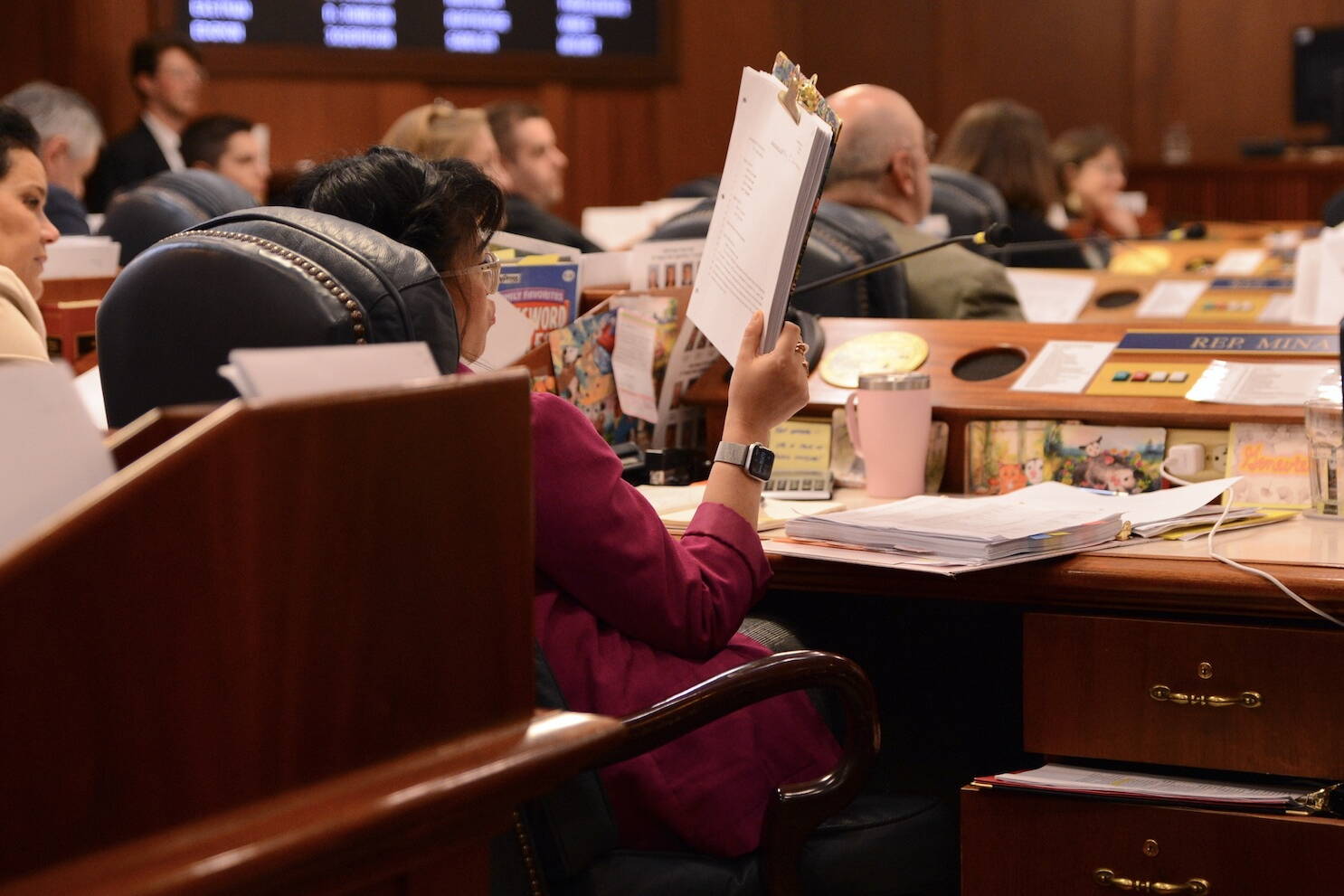More Alaskans will be able to access food stamps following lawmakers’ vote to expand eligibility for the Supplemental Nutrition Assistance Program on Wednesday night.
The change comes after more than a year of extreme delays in food stamp distribution across the state that left thousands of vulnerable Alaskans without aid for months at a time, driving many into debt and inundating food pantries with food insecure families. State workers caught up on the backlog in March.
Alaska will join 42 other states in using an approach called “broad based categorical eligibility” to streamline applications for the program. The move eases the requirements to get benefits and should reduce the administrative burden that contributed to a backlog in the state’s Division of Public Assistance.
Ron Meehan, director of government affairs for Food Banks of Alaska, said he shared the news with fellow advocates and food bank managers in a flurry of late-night text messages.
“We are feeling really relieved and excited about the implications of this,” he said. “This is something that has been a pretty significant priority for the Alaska Food Coalition and the Food Bank of Alaska, not just in the two years since this latest significant backlog, but really for at least a decade.”
Broad based categorical eligibility makes households with incomes less than twice of the federal poverty line eligible for the program. Previously, the threshold was 30% more than the poverty line in Alaska. It is a priority for food advocates because it allows more people to qualify and save up enough money to gradually exit the program. The bill also removes a component called the asset test, which kept people with more than $4,000 in savings from accessing food aid. That meant anyone with a car or a house would have to liquidate those assets and spend down cash before qualifying, Meehan said.
Rep. Genevieve Mina, D-Anchorage and the bill’s sponsor, has pushed for the legislation since last winter, when the state was still in the midst of the backlog. Her proposal, House Bill 196, was rolled into another piece of legislation, House Bill 344, on the last day of the session. The Senate passed it unanimously, while the House voted 26-14 to agree to the final version of the bill. Some lawmakers have lauded its success as one of the session’s major accomplishments.
“We have the ability to feed thousands and thousands of more Alaskans. It also allows more kids to have access to free lunch. And I think that is a great thing in terms of the food crisis that is in our state,” she said on the House floor Wednesday night.
Mina saw the inception of the current food stamp backlog as a legislative staffer after the number of jobs handling applications were reduced in 2021. Now, as a lawmaker, she is responsible for a policy change that she says will streamline the process. She said her efforts as a member of the House minority were boosted by support from veteran Sen. Cathy Giessel, R-Anchorage, the Senate majority leader — and because the problem affected every region in the state.
“There was just such an opportunity in the midst of all of that chaos to really step back and think, ‘What are the things that we can do to make sure that this doesn’t happen again?’” she said.
Since 2022, the state government has been scrambling to address the backlog and Gov. Mike Dunleavy has added more than $70 million to state budgets over the last two years to fight the crisis. The money has gone to computer upgrades, new staff and direct aid to food banks. Supporters say the new legislation marks a turning point to a proactive response to food instability in Alaska.
Though the changes could dramatically increase food aid to Alaskans, they will cost the state only about $140,000 because the SNAP benefits are paid for by the federal government.
Mina worked with the program’s state manager, Division of Public Assistance Director Deb Etheridge, to make sure the changes would help workers get through food stamp applications more efficiently. She credited the state administration with investing in new technology and said it is also important to retain staff at the Division of Public Assistance.
“Those are all just pieces that are starting to come together,” she said. “Hopefully by next year, we’ll see more Alaskans being able to eat and also more Alaskans able to transition off the program.”
• Claire Stremple is a reporter based in Juneau who got her start in public radio at KHNS in Haines, and then on the health and environment beat at KTOO in Juneau. This article originally appeared online at alaskabeacon.com. Alaska Beacon, an affiliate of States Newsroom, is an independent, nonpartisan news organization focused on connecting Alaskans to their state government.

